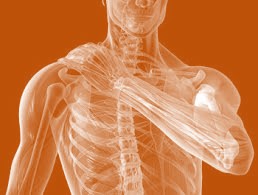Shoulder Surgery Down Time: Why are We so Focused on Sewing Rotator Cuff Tears?
I’m sitting here in the waiting room of a surgery center as my wife just had minor surgery. Orthopedic surgeons come and go telling families of how they found and “fixed” various rotator cuff tears. The brace guy eagerly awaits each new patient fitting them for a device that will guarantee loads of shoulder surgery down time. What’s wrong with this picture? Did these patients really need these invasive shoulder surgeries and extensive downtime? Maybe not…
A research study published last week suggests that all this entire industry of surgeons sewing together rotator cuff tears may do no good. While most of the studies I’ve highlighted that show that shoulder surgery to “fix” rotator cuff tears isn’t all that successful, this study went at the issue from the other angle. When you compare the results of patients whose torn rotator cuff mended due to the surgery versus those whose didn’t mend, is there a difference? After all, if all of these surgeons coming and going and all of these families are here because you must perform surgery on a torn rotator cuff, the ones that do mend with surgery should have far better outcomes than the one’s that don’t. Do they? Nope. After looking at almost 900 patients, there were no clinically significant differences between patients who had a successful healing of the tear versus those that did not. Why? We focus on the structure of the shoulder when it’s often unrelated to why the patient hurts in the first place. For many patients, the first time they find out they have a rotator cuff tear is when they have shoulder pain and a doctor orders an MRI. Is that tear causing the pain? Is the pain really from the neck? Form a lax ligament in the shoulder? From a muscle trigger point? Most of the time nobody checks. The patient is scheduled for surgery.
Is there a better way? Sure. First carefully decide if the rotator cuff tear is causing the pain. This takes more than a 5-10 minute office visit and is a careful deliberate process like the one described in our practice’s e-book, Orthopedics 2.0. Second, if it is the tear, in most instances, in our experience, precise stem cell injections into the shoulder rotator cuff tear area can usually help the pain and show evidence on imaging that the damaged fibers have healed. Third, our treatment registry data shows very good results when rotator cuff tears are injected with the patient’s own stem cells.
The upshot? Sitting here this morning as a patient and not a doctor is very educational. We perform way too many rotator cuff surgeries in my opinion. Based on the research, they don’t work well to help the main reason these patients go to see doctors – their shoulder hurts!

NOTE: This blog post provides general information to help the reader better understand regenerative medicine, musculoskeletal health, and related subjects. All content provided in this blog, website, or any linked materials, including text, graphics, images, patient profiles, outcomes, and information, are not intended and should not be considered or used as a substitute for medical advice, diagnosis, or treatment. Please always consult with a professional and certified healthcare provider to discuss if a treatment is right for you.

